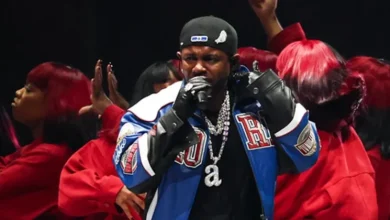Driving Economic Mobility for Black Students

HBCUs (Historically Black Colleges and Universities) play a significant role in the U.S. educational system. Established in the early 19th century, when Black students weren’t welcomed at many public and private educational institutions, they are proud to have around 300,000 students and deliver strong outcomes today.
HBCUs have long been supporters of students with limited access to other education options due to racism and discrimination: They account for 10% of Black undergraduate enrollment and 17% of bachelor’s degrees earned by Black students. Also, HBCUs provide more access to education for lower-income students than other colleges, fostering greater upward mobility.
This article, crafted with the insights and professional academic assistance of essay writing services, will focus on how HBCUs transform the USA’s higher education system and contribute to Black students’ economic mobility.
The Unique Role of HBCUs in Education and Black Economic Mobility
In 2022, McKinsey & Company unveiled a study highlighting the five critical roles HBCUs play in supporting Black students and encouraging their economic mobility:
- HBCUs’ targeted education and skill development programs expand opportunities for Black workers and enhance their earning potential.
- HBCUs’ on-campus business programs and partnerships with venture companies train the next generation of Black entrepreneurs, thus accelerating Black business ownership.
- HBCUs remove barriers for Black consumers, unleashing over $1 billion in consumer expenditures.
- HBCUs offer financial literacy products, thus supporting investments in Black households and contributing to increased savings within the community.
- HBCUs establish STEM-based tutoring programs and create a pipeline for Black educators and healthcare workers. (One-quarter of all bachelor’s degrees earned by Black students are in STEM disciplines: science, technology, engineering, and mathematics.)
HBCUs design programs to meet the needs of students who may be first-generation or come from under-resourced backgrounds. These institutions excel in terms of degree completion rates:
While only 18% of non-HBCU students move up at least two income quintiles from their parents, this percentage turns out to be 30% for students graduating from HBCUs. Besides, Historically Black Colleges and Universities create culturally supportive environments and emphasize community building, leadership, and mentorship, thus promoting student confidence and skills.
What’s more:
Academic and economic outcomes aren’t the only benefits a Black student can get from studying at an HBCU. Studies prove that HBCUs also contribute to the physical health of their attendees: Black students in an HBCU are less likely to develop factors for chronic disease than those attending predominantly White colleges.
HBCUs’ Social Impact and Community Investment
Most HBCUs are in U.S. regions with a median wage below the national average. Given that, we can say these educational institutions contribute to local economies:
HBCUs create around 134,000 jobs for regional economies, with every dollar their students spend generating $1.44.
HBCU graduates often reinvest in their communities, thus supporting economic mobility across generations. Community programs and initiatives that HBCUs support encourage social and economic uplift:
- Strong alumni networks at HBCUs facilitate Black graduates’ job placement and career development.
- HBCUs’ partnerships with different industries and local companies bring internships and a broader pool of job opportunities.
- HBCUs offer unique career placement programs for Black graduates, thus contributing to workforce diversity and fostering inclusivity.
Let’s face it: Black Americans earn a medium annual wage that is around 30% lower than that of the White workforce. HBCUs can accelerate progress for Black workers:
Enrolling and graduating more students, these educational institutions contribute to an increase in Black worker incomes.
How do HBCUs do that?
They partner with school districts, allowing K–12 students to take college courses in high school. Summer camps by HBCUs build awareness of their edu programs and encourage younger students to join them. Also, these universities target nontraditional student populations, such as those with some college credits.
HBCUs dedicate resources to boosting retention and graduation rates:
By partnering with corresponding foundations and initiatives, they improve support for low-income and first-generation college students to help them stay the course and get a diploma. HBCUs establish degree programs that prepare students for in-demand careers, thus increasing their chances of employment at high-paying jobs. Reskilling and upskilling programs for students and adults also help reduce the threats Black employment faces today.
Historically Black Colleges and Universities serve Black residents in more than education:
- They create higher-quality services in Black neighborhoods: teaching degrees placing graduates in schools within their communities, tutoring programs in STEM fields that lack Black representation, and summer camps with workplaces for locals, engaging and teaching kids while on breaks.
- They improve residents’ access to healthcare by graduating more medical-industry specialists and offering community clinics at little or no cost for neighborhood residents.
Given the above, we see how essential it is to support HBCUs with their initiatives. They transform the U.S. educational system by producing more high-earning graduates; they drive economic mobility: decrease student debt, support the development of more entrepreneurs, and remove barriers for Black consumers.
Why not recognize and strengthen HBCUs’ positive impact? The underfunding of these institutions remains an issue to address.




